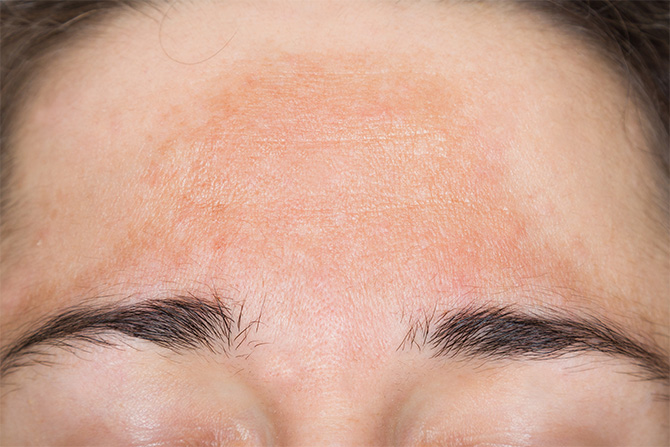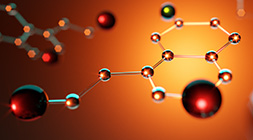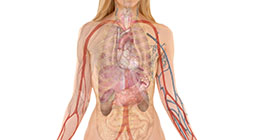
Overview
Symptoms
Causes
Prescription
Health Tips
Melasma, also known as brown spots or sun spots, is a common skin condition that causes brown discolourations on any part of the body that is exposed to the sun, but typically they appear on the face. While the condition affects a small percentage of men, it is common in women, particularly in young mothers, and in women taking contraceptives. It is very common in pregnant women and is often referred to as “the mask of pregnancy.”
Symptoms
Brown or brownish grey patches in the following areas:
- Arms and neck, although rare
- Cheeks
- Chin
- Forehead
- Nose
- Upper lip
Causes
The causes of melasma are not totally understood. Those with darker skin tones are at a much greater risk than those with fair skin. Additionally, genetics are thought to play a role and those with heritage from high ultraviolet radiation geographies are also at an increased risk. Hormonal changes, specifically pregnancy or hormone replacement therapy, and sun exposure may cause melasma. Products used on the skin can cause melanoma to get worse if they irritate the skin. Oxidative stress also contributes to the overproduction of skin pigment.
Prescription for Health
There is no cure for melasma, however it is possible to treat and control the condition.
Diet
Eat organic as much as possible because conventional meats, produce, and dairy contain hormone disrupting agents. Include lots of vegetables and fruit. Cruciferous vegetables such as broccoli, cauliflower, Brussels sprouts, and cabbage are especially important as they are beneficial to hormone health.
Avoid or greatly reduce sugar, refined carbohydrates and processed foods. Instead opt for whole grains such as millet, amaranth, oats, quinoa, and brown rice. Include legumes, seeds, nuts and quality proteins, such as wild salmon or mackerel, and organic chicken or eggs. Increasing fiber intake will help to naturally eliminate estrogen.
Avoid margarine and low-quality or rancid fats such as canola, soy, cotton seed, or safflower oil. Include virgin coconut oil, extra virgin olive oil, organic grass-fed butter.
Lifestyle
Prevent overexposure to the sun. Although melasma has its roots in hormonal imbalance, this condition is exacerbated by exposure to the sun and ultraviolet rays. Wear protective clothing and a hat whenever outside and avoid tanning beds. Use a non-toxic, broad-spectrum sunscreen. Visit the Environmental Working Group’s Skin Deep® Cosmetics Database and look for the cleanest options. A few good brands are Badger, Aubrey Organics, Colorescience® minerals, and Jane Iredale pressed minerals, especially for oily or acne prone skin. The high zinc powder content in these products renders the skin surface inhospitable to Propionibacterium acnes, a group of bacteria that causes almost all acne. Another unique sunscreen is ZO Skin Health Oclipse®, which contains natural melanin. When ultraviolet light strikes the skin, it responds by manufacturing melanin for protection. So, it makes sense to put natural melanin on the skin to help protect it from the sun’s harmful UVB rays
Eliminate hormone disrupting xenoestrogens from diet, home and body care items. Avoid chemicals on EWG’s Dirty Dozen Endocrine Disrupters
Use a sulforaphane ointment, not the lotion, to promote cellular repair and reduce sun damage. This can be used to reverse brown spots but it must be used every day.
Supplements
The supplements and tips below may help to reduce melasma.
| Nutrient | Dosage | Action |
|---|---|---|
| Vitamin A | 1250 IU | Promotes smooth, clear skin |
| Vitamin C (calcium ascorbate, magnesium ascorbate, potassium ascorbate) | 1000 mg | Vitamins A, C, E given together over 8 weeks had a significant reduction in pigment |
| Vitamin D | 500 IU | Promotes healing of the skin |
| Vitamin E | 100 IU | Acts as an antioxidant and encourages tissue repair |
| Zinc | 7.5 mg | Essential for healthy immune function |
| Borage Oil | 2000 mg daily | Restores moisture balance, anti inflammatory |
| Indole-3-carbinol* | 150 mg | Eliminates excess toxic and cancer-causing estrogens |
| Sulforaphane* | 200 mcg | Stops abnormal cell growth |
| D-glucarate* | 150 mg | Important for healthy metabolism of estrogen |
| Curcumin* | 50 mg | Prevents abnormal cell growth, detoxifies cancer-causing forms of estrogen |
| Rosemary* | 25 mg | Antioxidant |
| DIM (diindolylmethane)* | 50 mg | Hormone balancing |
| Green tea extract* | 100 mg | Protects against abnormal cell growth |
*Can be found in one formula
Additional Health Tips to Enhance Healing
- Avoid overexposure to the sun.
- Eliminate hormone disruptors.
- Focus on a diet rich in fruits and vegetables, along with consuming 25 g of fiber daily.
- Take fatty acids like borage oil to help naturally build melanin in the skin.
- Use a non-toxic, broad-spectrum sunscreen.
Additional Treatments
IPL Photofacial (also known as Intense Pulsed Light or Photorejuvenation) is hailed as the “Gold Standard” treatment for the reduction of pigmentation.
Age spots, sun damage, rosacea, broken capillaries and freckles can create a dull and aged complexion. With IPL you can target this pigmentation to expose fresher, younger looking skin










